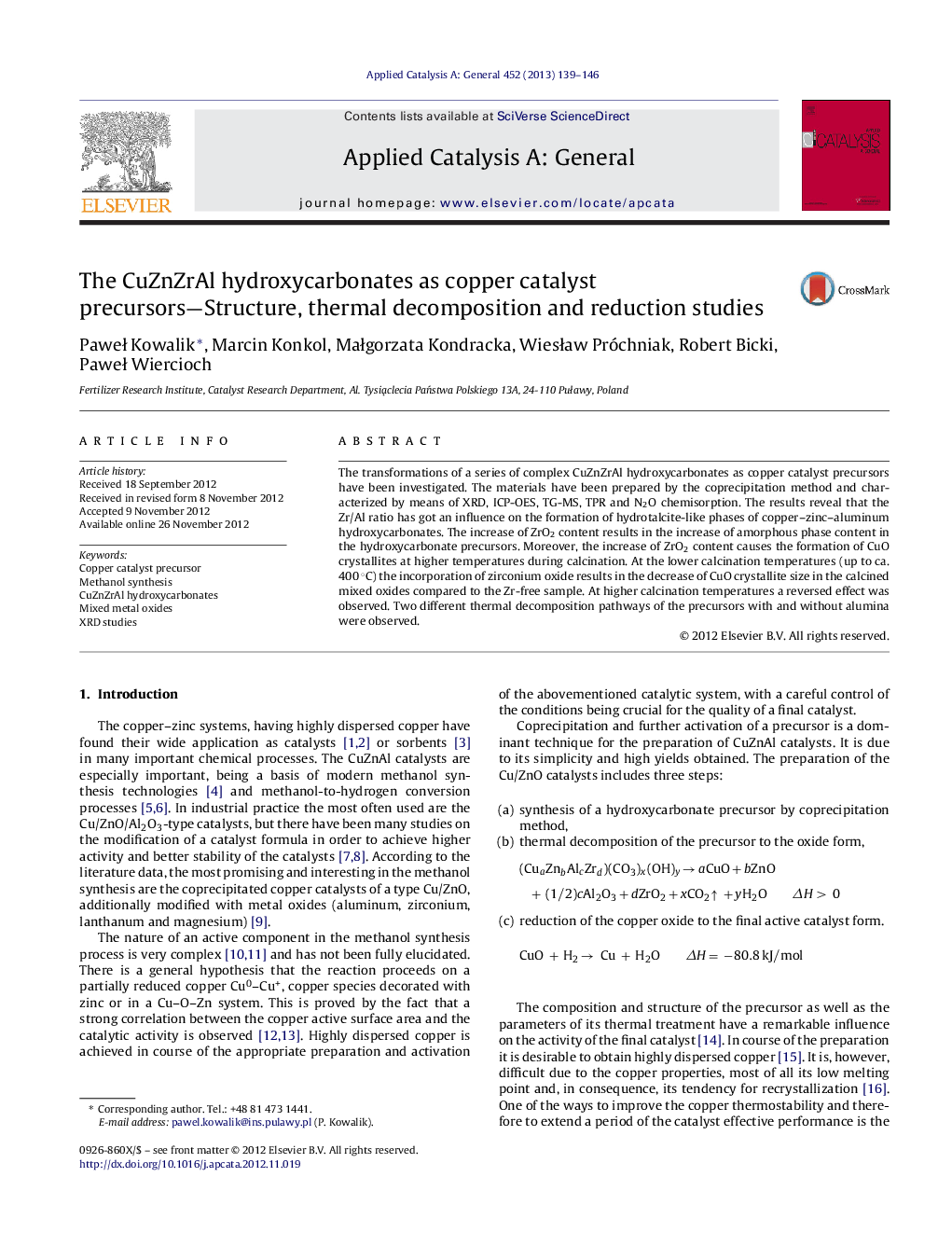| Article ID | Journal | Published Year | Pages | File Type |
|---|---|---|---|---|
| 40502 | Applied Catalysis A: General | 2013 | 8 Pages |
The transformations of a series of complex CuZnZrAl hydroxycarbonates as copper catalyst precursors have been investigated. The materials have been prepared by the coprecipitation method and characterized by means of XRD, ICP-OES, TG-MS, TPR and N2O chemisorption. The results reveal that the Zr/Al ratio has got an influence on the formation of hydrotalcite-like phases of copper–zinc–aluminum hydroxycarbonates. The increase of ZrO2 content results in the increase of amorphous phase content in the hydroxycarbonate precursors. Moreover, the increase of ZrO2 content causes the formation of CuO crystallites at higher temperatures during calcination. At the lower calcination temperatures (up to ca. 400 °C) the incorporation of zirconium oxide results in the decrease of CuO crystallite size in the calcined mixed oxides compared to the Zr-free sample. At higher calcination temperatures a reversed effect was observed. Two different thermal decomposition pathways of the precursors with and without alumina were observed.
Graphical abstractFigure optionsDownload full-size imageDownload high-quality image (168 K)Download as PowerPoint slideHighlights► HT-XRD studies of two series of complex CuZnZrAl hydroxycarbonates as copper catalyst precursors. ► Influence of the Zr/Al ratio on the formation of hydrotalcite-like phases of the CuZnAl hydroxycarbonates. ► With increasing ZrO2 content CuO crystallites form at higher temperatures during calcination. ► Decrease of CuO crystallite size at the calcination temperatures up to ca. 400 °C upon addition of zirconium oxide.
